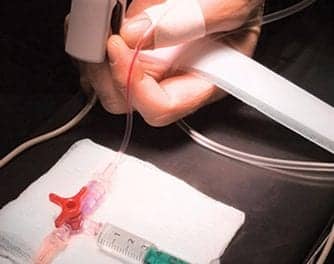A University of Pittsburgh School of Medicine review reveals research-based guidance to improve compliance when treating sepsis.
Sepsis is a life-threatening condition that arises when the body’s response to an infection injures its own tissues and organs. It occurs in more than 230,000 U.S. patients every year, with most initially receiving care in an emergency department. Despite best practice, more than 1 in 5 septic shock patients do not survive.
In this week’s issue of the Journal of the American Medical Association, Pitt researchers incorporate the results of several high-profile clinical trials into a concise clinical diagnosis and treatment algorithm to aid hospitals in the implementation of the National Quality Forum (NQF) Severe Sepsis and Septic Shock Management Bundle.
“The NQF sepsis bundle comes on the heels of several high-profile sepsis deaths that highlighted the need for better recognition, prompt treatment and frequent re-assessment of patients with septic shock,” said lead author Christopher W. Seymour, M.D., M.Sc., assistant professor in Pitt’s departments of Critical Care Medicine and Emergency Medicine. “The sepsis problem is clear, but the solution for patients remains elusive. This new algorithm provides doctors and hospitals with a best-practice approach to assessing and treating septic shock patients as supported by the most recent evidence.”










